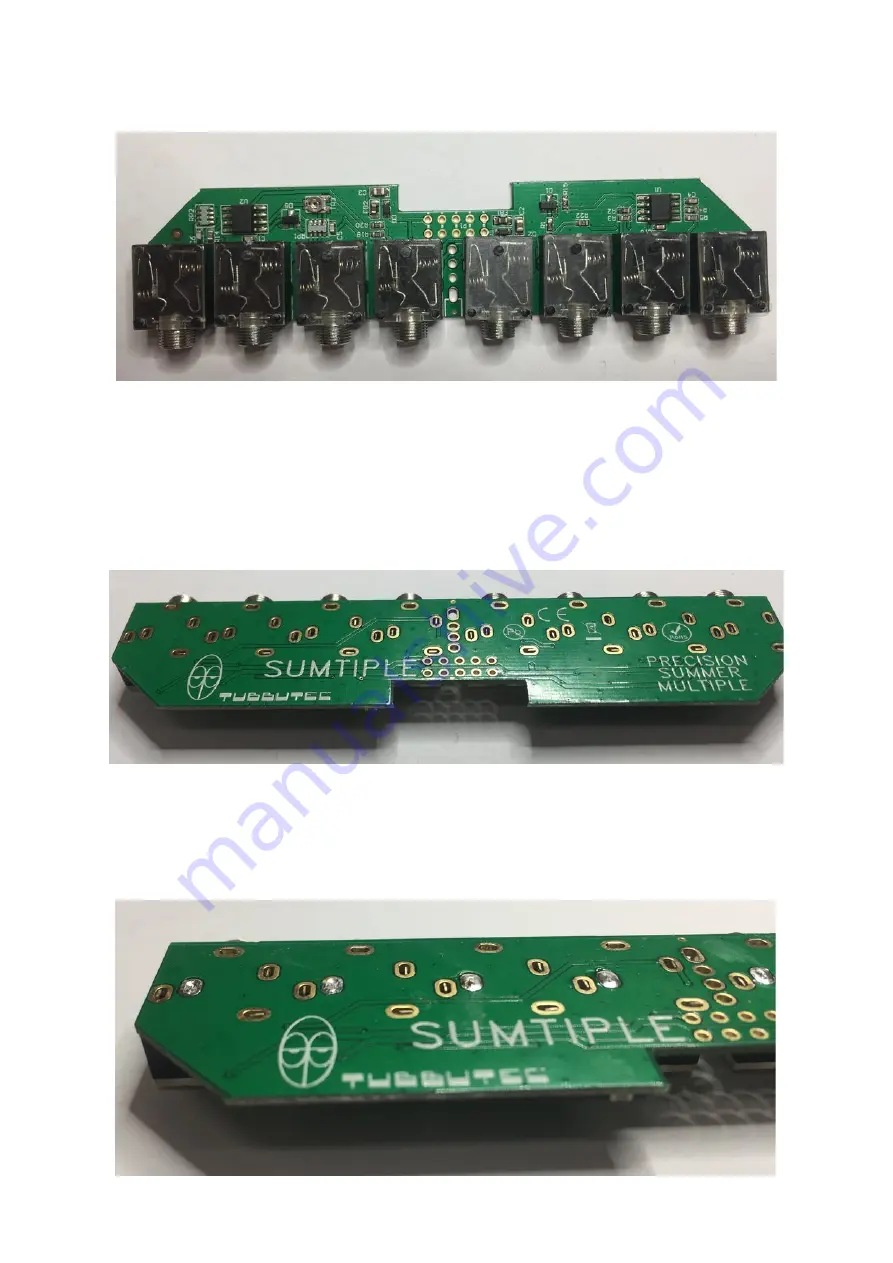
Now turn the board over. The easiest way, without all the sockets falling out, is to take a
ruler and put it on top of the sockets, hold it with the PCB and turn it around. When you
put it on the table, you can slide the sockets and PCB off the ruler.
If you cut the pins to the right length, the PCB with the sockets should look something like
this:
You can see that the pins are level with the PCB and not sticking out (This should be the
case for every pin on the board [the LED and pin header pins]) Now start soldering one pin
of each jack. That makes it easier to realign them before soldering the rest of the pins.
We used the second pin from the left in the picture above.























